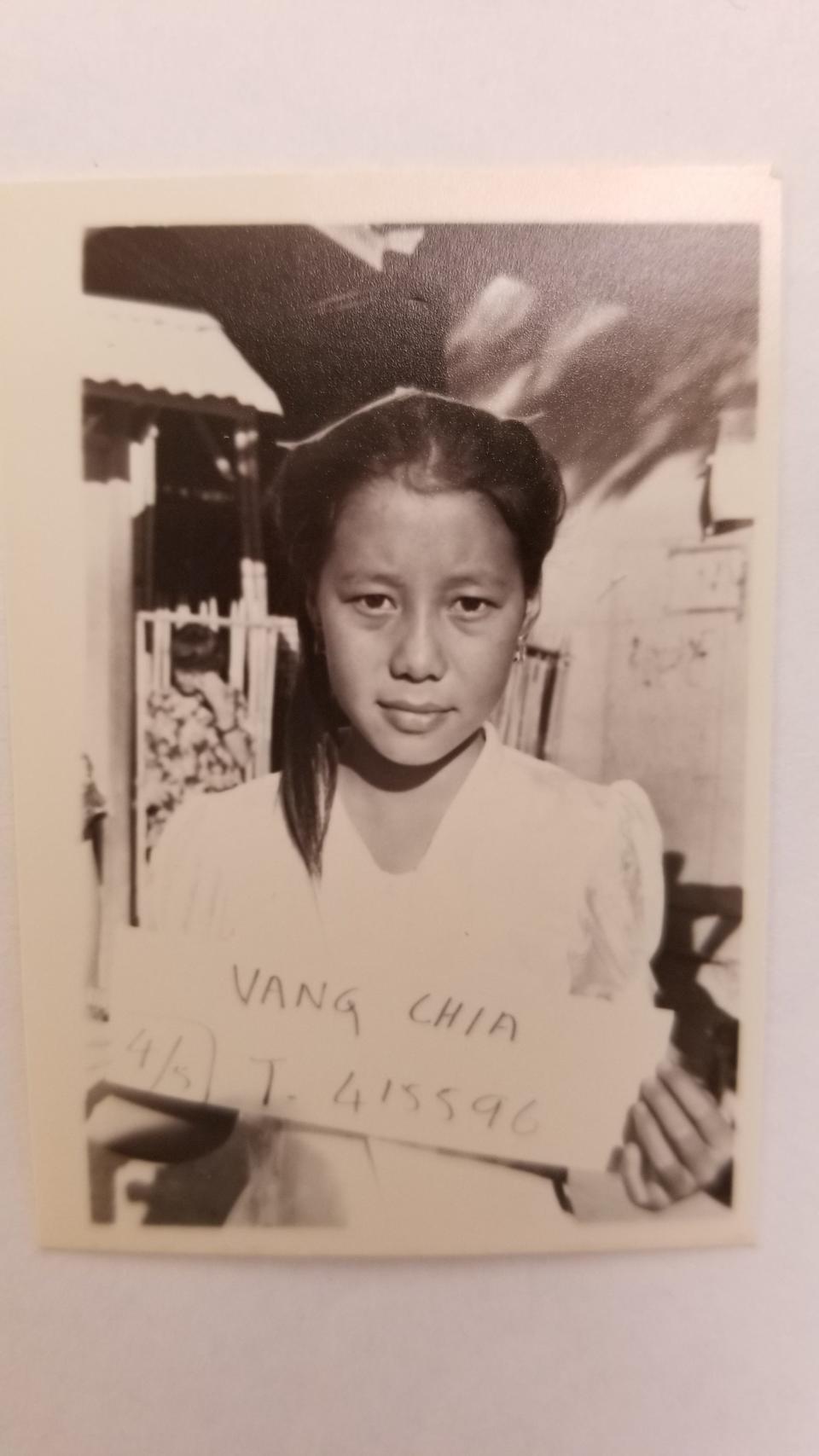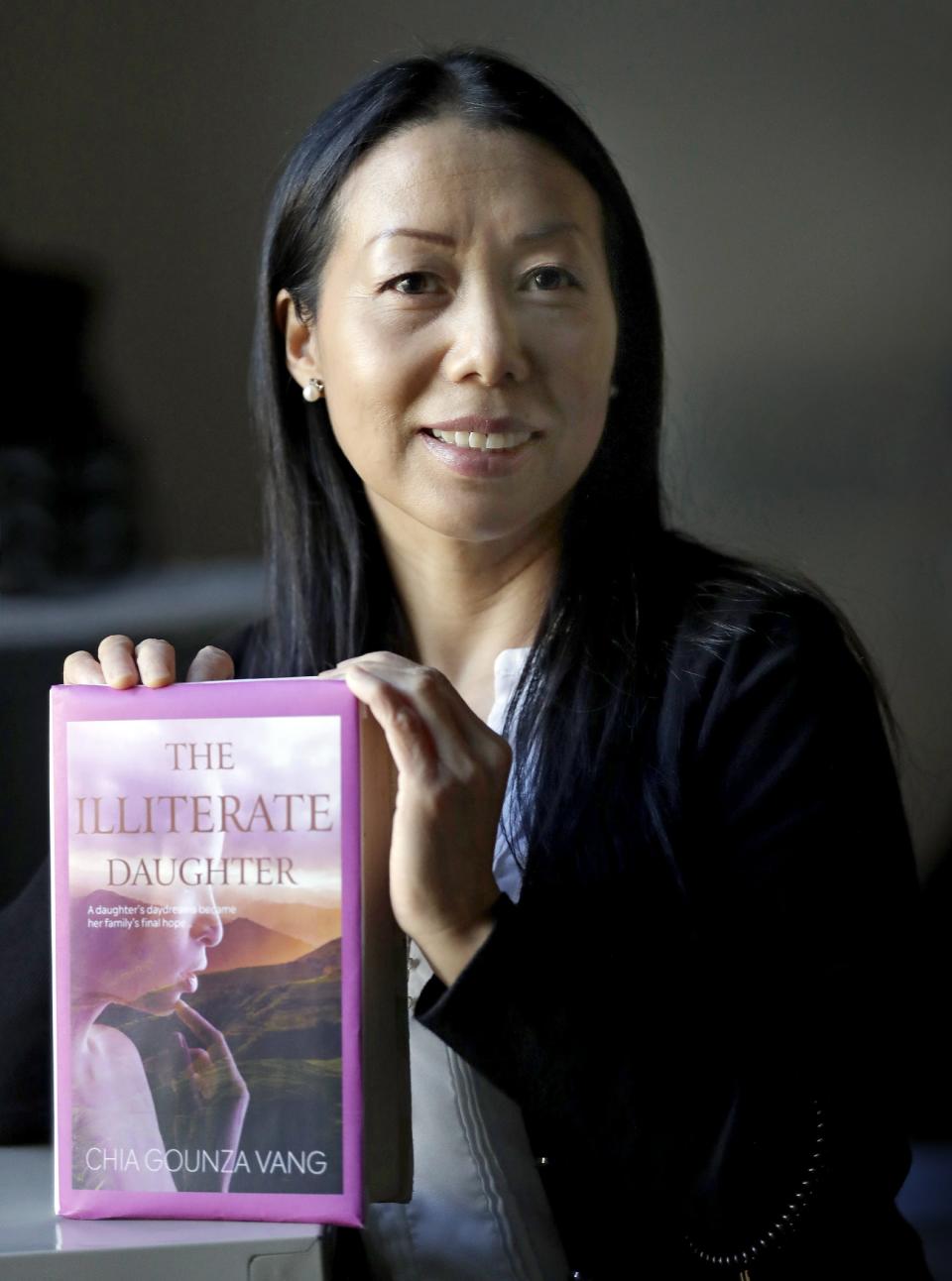As Appleton schools anticipate Afghan refugee students, one middle school teacher shares her experience as a newcomer over 30 years ago
APPLETON - Chia Vang was 15 years old when she moved to Appleton. It was the summer of 1989 and she couldn’t believe how green the grass was or how nicely the streets were paved.
Compared to the refugee camps in Thailand she had lived in for the previous six years, these seemingly everyday signs of life and order seemed shockingly out of place to her.
Vang, the youngest daughter of seven kids, suddenly found herself calling Appleton home. One of her older brothers invited Vang to stay with his family of seven in the city, despite the cramped quarters. In his two-bedroom, one-bathroom home, her brother and his family slept in one room, she and her mother shared the other and her other three brothers slept in the living room.
As a teenager, the first few years were challenging.
She didn't speak the same language, eat the same foods or wear the same clothes as the other students at her school. She also had spent a bulk of her childhood in a refugee camp, something few of her classmates could identify with.
Despite these obstacles, Vang persevered, achieving her goals of being a teacher and a writer.
A couple months ago, Vang read about the United States withdrawing troops from Afghanistan, with roughly 400 Afghan refugees finding a temporary home at Fort McCoy, a mere 130 miles from her Appleton home.
One Afghan family has already registered their children in the Appleton Area School District, with more expected to follow, said Amy Swick, English learner/bilingual coordinator. And while the exact number of Afghan refugee students is still not known, the district is preparing for their arrival by looking to hire people who can support them, Swick said.
Vang can relate to the need for support and the challenges the Afghan refugee students could face. She said she wants to help those students feel like they have a home in Appleton, too. She remembers feeling scared and anxious during her first few years in public school. She plans to leverage her experiences and make the incoming Afghan students feel welcome.
“'When I came, I had this anxiety, 'and I was scared of not knowing what to do,'" she said. “I’m pretty sure they’ll go through that, too... If I know who they are, I want to make them feel welcome and like they are part of this school."
More: Here's why some Wisconsin schools scaled back contact tracing and are skipping quarantines
More: Fox Valley prepares to offer homes for up to 100 Afghan evacuees
Vang's journey to Appleton
Before the Vietnam War started in 1955, Vang's parents were farmers in Laos who lived a peaceful life in a land they loved. By the time the war ended in 1975, it was no longer safe due to the retaliation against those, including Vang’s father, who fought with American soldiers. That fear led Vang’s parents and siblings to hide in the jungle and pray for calm.
Her family spent a year living in the jungle of Laos foraging for anything to eat. Her father’s leg was injured during the war, and after so long in such harsh conditions, the pain was enough to risk his life and bring his family back to a village.
It was during that journey out of the jungle that Vang was born on the hillside of a mountain. Under the chaotic circumstances, the exact day of her birth is unknown. Having little strength and rest between the perilous journey and giving birth, Vang’s mother had to fight hard to keep herself and Vang alive during this stage of her life.

The family eventually made it to a village, but her father had to escape again, this time to Thailand. Once a year, he would secretly come visit his family in Laos, but was noticed after a few years, so he came back just once more to gather his family and take them to Thailand.
They packed clothes and food in backpacks and rattan baskets for their 10 days of traveling on foot through mountainous terrain — the safest route for her big family.
In Thailand, Vang and her family spent five years in Ban Vinai, a refugee camp, and another year at a second refugee camp, Chiang Kham.
Vang lived in the camps for most of her early teen years, but there weren't many places for school-type learning, Vang said. Instead, she spent her time getting water each day, cooking for her family, hanging out with friends and making colorful story cloths — flat textiles that use traditional designs to depict scenes of Hmong tradition or history — with her mom.
After six years in the refugee camps, Vang and her family moved to the United States.
Today, Vang teaches seventh grade social studies at Wilson Middle School. She also authored a series of fictional books inspired by the true events both her and her husband's families faced. The first book is available on Kindle and other digital platforms now.

Adjusting to life in Appleton
Learning English as a teenager was challenging for Vang. Although her family lived walking distance from Wilson, she was bused to the former Roosevelt Middle School because it housed the district’s English learner program.
Based on her age, she should have been in ninth grade, but she was placed in eighth grade because she didn’t speak English. Vang wanted to be moved down further to an elementary grade because it was so challenging, but she was too old for that. Eventually, her English learner teacher moved her to seventh grade.
Although her teacher didn’t speak Hmong, she was like a mother figure, Vang said. She would help her with homework, offer to take her shopping and stop by her house to lend a hand however she could. Vang said she felt comfortable talking about the trauma she'd been through with her teacher.
Before coming to the U.S., Vang learned how to say ‘hello’ and ‘my name is,’ but learning the language was a challenge for her. She found other students in her English learner classes who also spoke Hmong, so they would communicate in Hmong, but it didn't help her English, she said.
Despite the difficulty, Vang never stopped wanting to learn. She would spend hours translating just a couple paragraphs. It was frustrating and it took a long time, but she wanted to learn so she could someday reach her dreams of teaching and writing.
She had a harder time making friends with her American peers, and in science class, people didn’t want to be her lab partner. English and science were her worst subjects because of the language barrier, but Vang said math was easy for her because she didn’t need to know English to know numbers.
Outside of academics, Vang said, she struggled to fit in with her peers because of her bright clothing — which she got into the habit of wearing just because that's what they wore at the refugee camp — and lunches consisting of rice and meat rather than pizza or chicken nuggets.

Shortly after moving to Appleton, when she was just 17, Vang got married — the young age which is typical in Hmong culture — and moved to Eau Claire. She went to Eau Claire North High School and then the University of Wisconsin-Eau Claire for one year before having her first child.
Balancing school, a newborn baby and taking care of her in-laws all while still adjusting to a new country was a lot for Vang to juggle as a young adult. She pressed pause on her education and left UW-Eau Claire, but she held on to her aspirations for the future.
After having her first child, Vang wanted to move back to Appleton to be closer to her mom. Upon her return, she finished her degree at UW-Oshkosh. Over the next eight of years, Vang had three more children.
One in 10 Appleton students today are English learners
The English learner program in Appleton Area School District has grown significantly since Vang was a student roughly 30 years ago, Swick said.
It varies from year to year, but generally, about 10% or 1,450 of the district's 15,000 students are English learners, Swick said. The programming and supports have increased over the years to meet the needs of students in the community as demographics have shifted and changed.
One of the biggest areas of growth has been the newcomer program that supports students who are new to the country.
Unlike when Vang was a student in the program, there are now English learner services offered at almost every school in the district. Newcomer programs are offered at Appleton North High School, Kaleidoscope Academy, and McKinley and Dunlap elementary schools.
There are over 50 languages spoken by students and families in the district, Swick said. Between interpreters, refugee support specialists and other staff, there are adults in Appleton schools who can speak the five most common foreign languages spoken in the district: Hmong, Spanish, Swahili, Kinyarwanda and Arabic.
In Afghanistan, the predominant languages are Pashtu, Dari and Farsi. Although those aren't the languages AASD is most equipped to handle, Swick said the district is looking into hiring staff who can better support any Afghan refugee students.
Much of the support for the English learners program focuses on academic language, since those students have been in the country for multiple years, whereas the newcomer program helps students with English they’d find in both a school setting and social settings.
The district also employs a newcomer and refugee liaison and a refugee support specialist to welcome students with refugee backgrounds to the district and help them adjust to school life.
It has a flexible model to meet the individual needs of students. For example, teachers may go into general education classrooms to work with the students who need language support or they may co-plan and co-teach full lessons. Some students are pulled out of the mainstream classrooms for about 30 minutes a day a few days a week or more.
During the pandemic, the district was still able to serve English learner students virtually and in small groups. Some of the students were even brought back into the buildings when the district was technically still all virtual for occasional in-person learning.
Every year, Vang spends time teaching her students about the Hmong's journey to America as part of the seventh grade curriculum. Her dad wanted to her to be a nurse someday, but she hates poking people with needles. Instead, she wanted to be in a position to help other students who may struggle like she did.
Reach AnnMarie Hilton at ahilton@gannett.com or 920-370-8045. Follow her on Twitter at @hilton_annmarie.
This article originally appeared on Appleton Post-Crescent: Appleton schools prepare for Afghan refugees. Here's one woman's story

